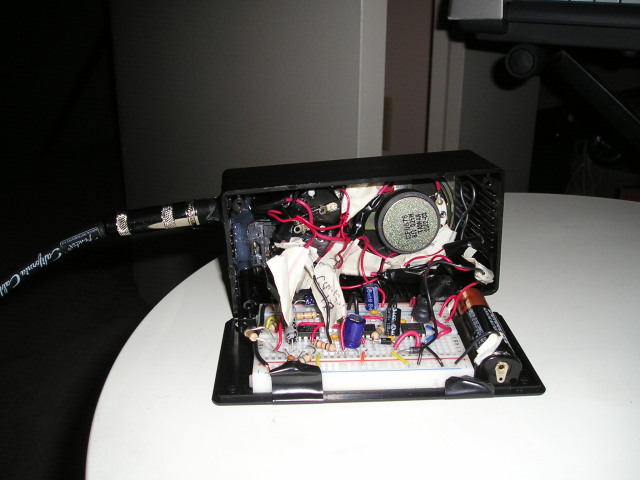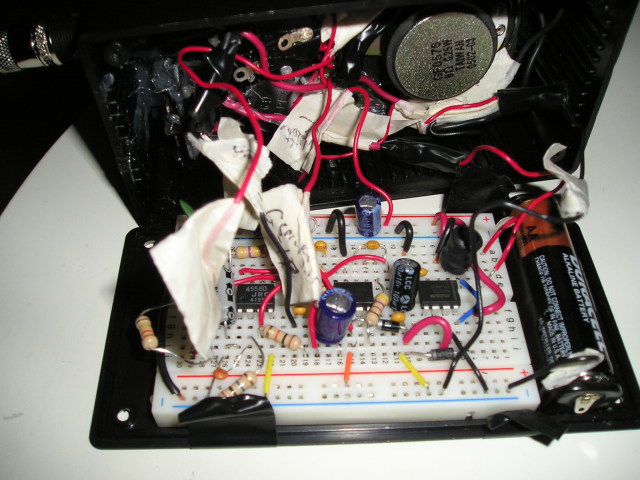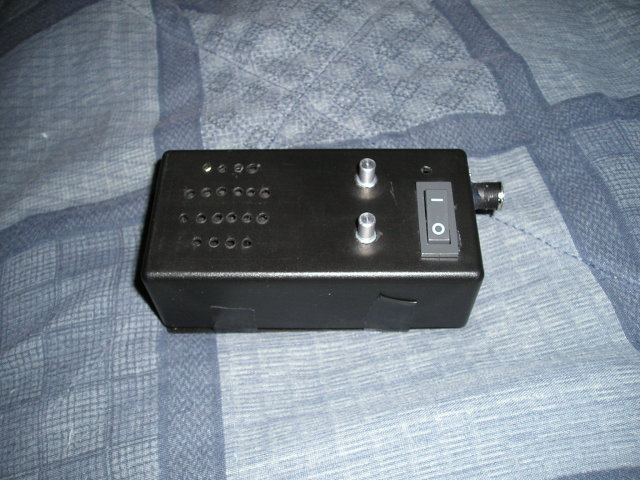I had seen a small "guitar amp" that fit in an Altoids tin and I decided I wanted to try to build one. What follows are some notes about that project.
About
While being able to fit into an Altoids tin is neat, I decided not to limit myself like that. I wanted the circuit to be easy to modify and so I used a small project case with a mounted breadboard rather than an Altoids tin. I also added in a distortion circuit. After spending some time looking around online for schematics of how other people have done it, I chose a simple chip amp design off of Instructables. I decided on this one because the schematic was well put together and easy to read. I used only the schematic and ignored the rest of the steps on the Instructables site.
After getting that working I searched around for a simple distortion circuit that I could fit on the remaining part of the breadboard. Google brought me to this great page on RabbathRecordings.com. It provided schematics for a DOD 250 distortion pedal along with great explanations of how the circuit works. The circuit is really simple, and the distortion is very smooth. I'd definitely recommend the DOD 250 to anyone who wants a simple distortion circuit.
Assembling the circuit was easy and everything functioned as planned, but unfortunately, everything did not go smoothly. The breadboard that I used wasn't of the highest quality and the capacitors sometimes lose contact if the unit is shaken too much. I measured everything out and expected it all to fit in the case, but the fit was too tight. It takes too much effort to get the wires away from the components to safely close the case. The 3/4" jack's fit was also too tight, so instead of having it properly in the case, half of it is sticks out.
Otherwise, it works pretty well. Being on a breadboard has allowed me to modify the effects and easily attempt modifications of the sound from other circuits as well. The amp is clean enough with the distortion off to use for other sources such as an MP3 player or a crystal radio.
Building Advice
The DOD 250 has a voltage divider circuit. If you leave this on and get rid of the MAX756 from the other circuit you can power everything off of a 9V battery. This works well, makes the circuit simpler, and gives you a fair amount of extra volume, but since AA batteries are so much cheaper I decided to go the other way. To do this just scrap the voltage divider and feed the distortion circuit from the voltage out of the MAX756.
If you turn the distortion pot all the way down it will still sound a little distorted. To fix this just try different resistor values until you find one large enough to give a fairly clean sound without taking away from distortion potential too much.
I didn't bother looking up the correct way to control gain on the LM386. The Instructable advised shorting the two pins, but I found that made the sound dirty. I tried different resistor values and found a 4k worked really well at giving a good amount of gain without hurting the sound quality.
Images
Audio
When I went to record it for some reason there was a lot of extra noise being made by the amp. I'm not sure why that was. It doesn't usually have all those extra nasty sounds. I made the recording with a Zoom H2 and it did a good job of picking up all the details, including the bad sounds. The following sound file demonstrates the amp with a few different distortion settings.



